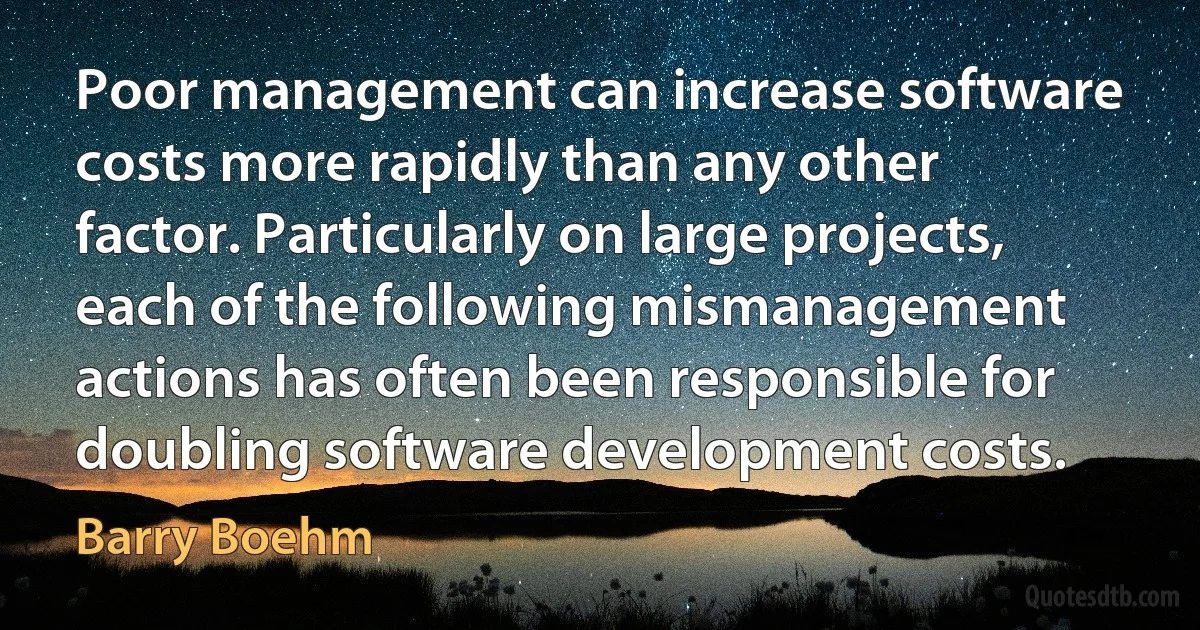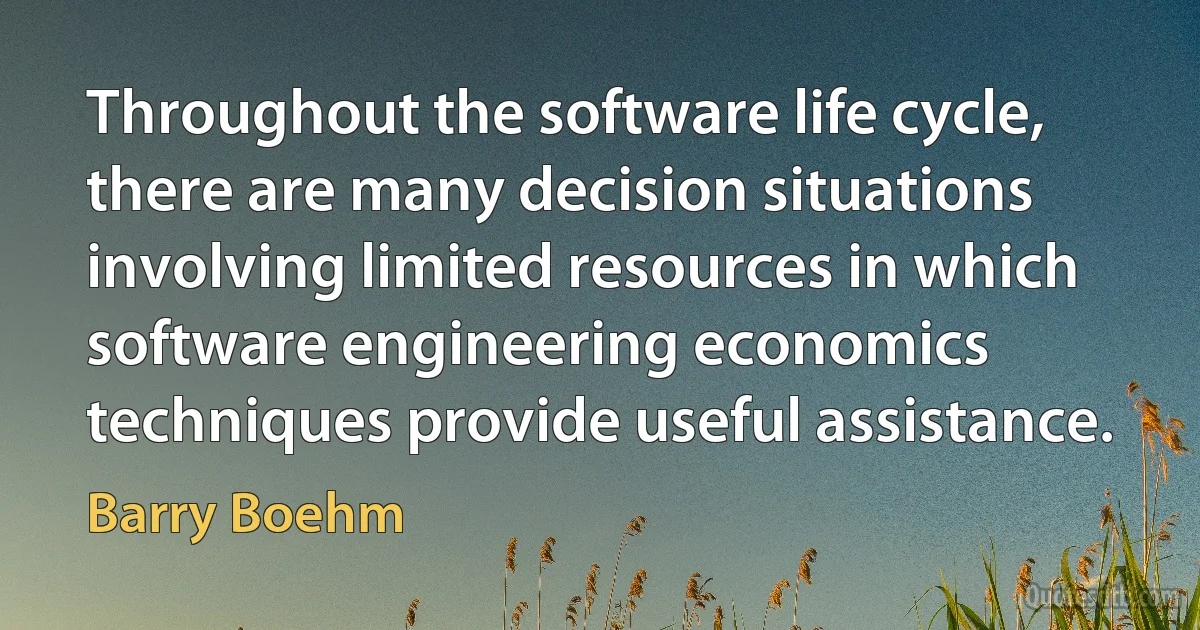Barry Boehm quotes
Economic principles underlie the overall structure of the software lifecycle, and its primary refinements of prototyping, incremental development, and advancemanship. The primary economic driver of the life-cycle structure is the significantly increasing cost of making a software change or fixing a software problem, as a function of the phase in which the change or fix is made.

Barry Boehm
The spiral model presented in this article is one candidate for improving the software process model situation. The major distinguishing feature of the spiral model is that it creates a risk-driven approach to the software process rather than a primarily document-driven or code-driven process. It incorporates many of the strengths of other models and resolves many of their difficulties.

Barry Boehm
Agile development methodologies promise higher customer satisfaction, lower defect rates, faster development times and a solution to rapidly changing requirements. Plan-driven approaches promise predictability, stability, and high assurance. However, both approaches have shortcomings that, if left unaddressed, can lead to project failure. The challenge is to balance the two approaches to take advantage of their strengths and compensate for their weaknesses.

Barry Boehm
Like many fields in their early stages, the software field has had its share of project disasters: the software equivalents of Beauvais Cathedral, the S. S. Titanic, and the "Galloping Gertie" Tacoma Narrows Bridge. The frequency of these disaster projects is a serious concern: a recent survey of 600 firms indicated that 35% of them had at least one "runaway' software project.

Barry Boehm
Most post-mortems of these software disaster projects have indicated that their problems would have been avoided or strongly reduced if there had been an explicit early concern with identifying and resolving their high-risk elements. Frequently, these projects were swept along by a tide of optimistic enthusiasm during their early phases, which caused them to miss some clear signals of high risk issues which proved to be the project's downfall later.
Enthusiasm for new software capabilities is a good thing. But it needs to be tempered with a concern for early identification and resolution of a project's high-risk elements, so that people can get these resolved early and then focus their enthusiasm and energy on the positive aspects of their software product.

Barry Boehm
What we see in both software development and military operations is a tendency for the pendulum to swing back and forth between extremes. Yet in most cases, we need a balance between armor and discipline and between mobility and agility. Actually, though, I would say that the leaders in both the agile and plan-driven camps occupy various places in the responsible middle. It's only the over-enthusiastic followers who overinterpret "discipline” and "agility” to unhealthy degrees.

Barry Boehm


